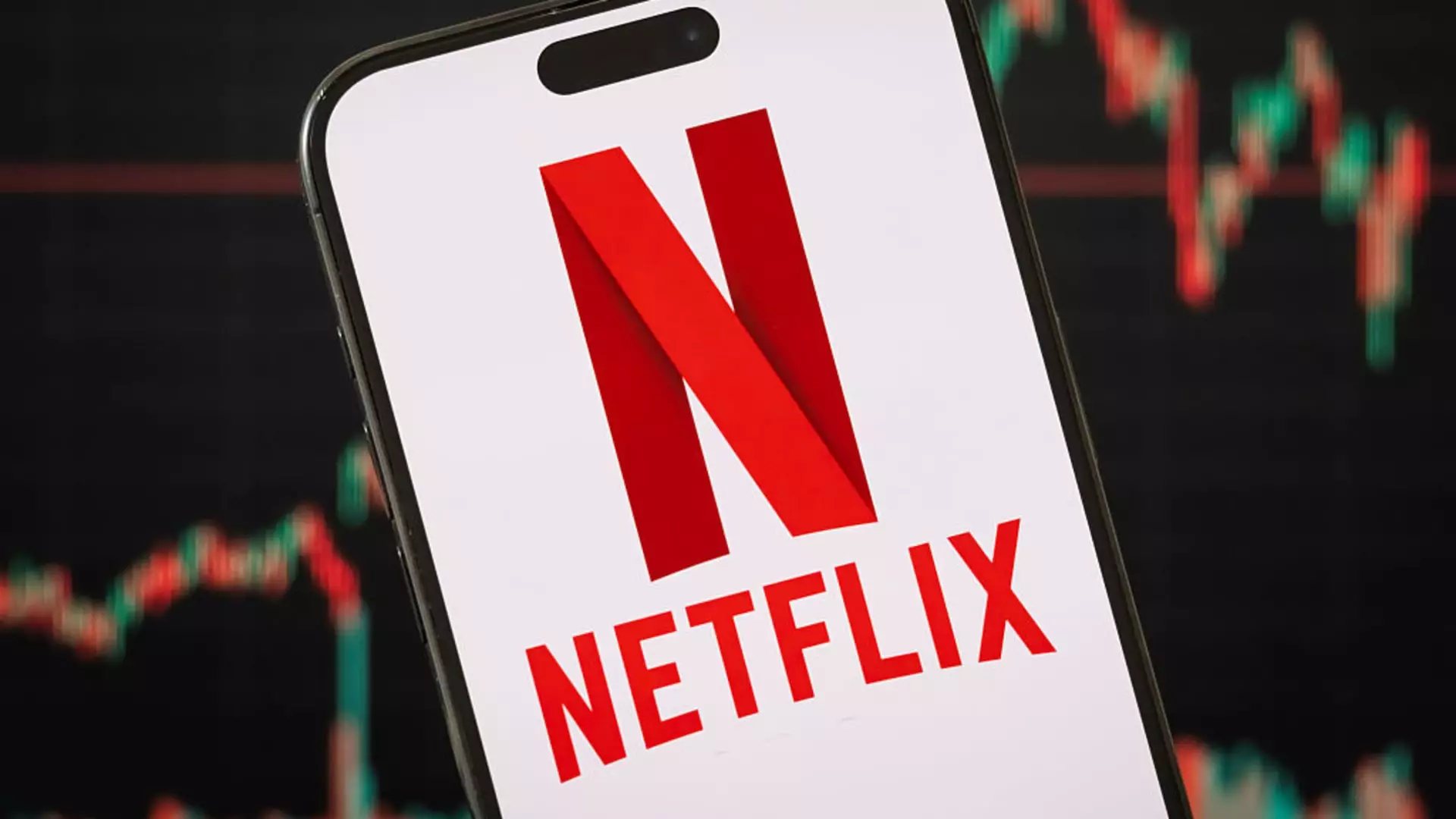Netflix’s momentum is nothing short of astounding. As the world’s leading streaming service, it has defied market volatility and even some economy-wide downturns to achieve its longest positive streak in stock performance, a remarkable eleven consecutive days without a dip. This is no small feat, especially considering the tumultuous nature of the media landscape and shifting consumer habits. But what exactly fuels Netflix’s current position, and what does it say about the future of entertainment consumption?
A Historic Moment in Streaming
The achievement of eleven straight days of stock gains highlights a crucial moment for Netflix. This surpasses the previous record of nine days, showcasing not only the company’s operational strength but also investors’ burgeoning confidence in its business model. As Netflix trades at an all-time high since going public in May 2002, one can’t help but think about what differentiates this multiple Emmy-winning service from its traditional competitors. Unlike media giants struggling under the weight of outdated business structures and crushing debt—a plight evident in the recent declines of Warner Bros. Discovery and Disney—Netflix’s agility and innovation have been key. Its adaptability allows it to capitalize on emerging trends faster than any of its rivals, standing out in a world clamoring for on-demand content.
Resilience Against Economic Headwinds
Netflix’s stock performance coincides with a precarious political and economic landscape, influenced by Trump’s contentious trade policies. However, unlike many traditional media companies, Netflix seems insulated from external pressures. The company’s resilient performance during turbulent times is not merely due to a loyal consumer base; it reflects a paradigm shift in how people consume entertainment. Just as the market becomes wary of consumer sentiment, evidenced by companies’ falling stocks, Netflix remains a staple in households. This is particularly true during economic downturns when entertainment becomes even more vital for mental relief, suggesting that services like Netflix may be seen as essential rather than discretionary.
Advertising Boom and Financial Forecasting
Following the release of its latest earnings report on April 17, Netflix showcased impressive earnings growth, with a revenue increase of 13% in the first quarter of 2025. This was primarily driven by subscription and advertising revenue exceeding forecasts. Analysts indicate that as traditional media ventures into advertising upfronts, Netflix stands to benefit even further, giving credence to the company’s stronger-than-expected financial projections. The forecast of between $43.5 billion and $44.5 billion highlights a clear path forward, something traditional linear networks often fail to predict accurately as they grapple with reruns and cable cuts.
The Balancing Act of Pricing and Value
It’s worth noting that Netflix has strategically adjusted its subscription prices, a bold move that typically raises concerns among consumers but has proven successful thus far. The pricing tiers—from $7.99 for ad-supported access up to $24.99 for premium subscriptions—have not diminished its value proposition. The challenge lies ahead, however; while revenue growth is paramount, clarity regarding subscriber growth figures has clouded the outlook. The shift to prioritize revenue over strictly subscriber metrics raises questions about Netflix’s growth sustainability. Analysts warn that if the subscriber growth stagnates, the narrative might shift swiftly from growth to concern, especially with competition intensifying as more platforms capture the streaming market.
A Promising Yet Uncertain Future
While it seems Netflix is riding high, foreseeing what the future holds for the streaming giant is fraught with uncertainty. The company might currently find itself in the enviable position of being a leader in global streaming, yet the landscape is ever-evolving. The reliance on advertising revenue, for example, could be a double-edged sword, susceptible to the same economic fluctuations that have impacted other media sectors. Moreover, therein lies the question: how sustainable is Netflix’s growth model in an increasingly crowded market where consumers can only dedicate so much time to screens?
While there’s no denying that the current chapter of Netflix is a triumphant narrative, mindful caution is warranted. As a center-leaning liberal, I believe that while innovation is admirable, a continuous focus on revenue without understanding consumer needs might eventually pose a risk. And in an industry known for its dramatic twists and turns, we must remain vigilant about the fine line between being a market leader and a fleeting bubble.

